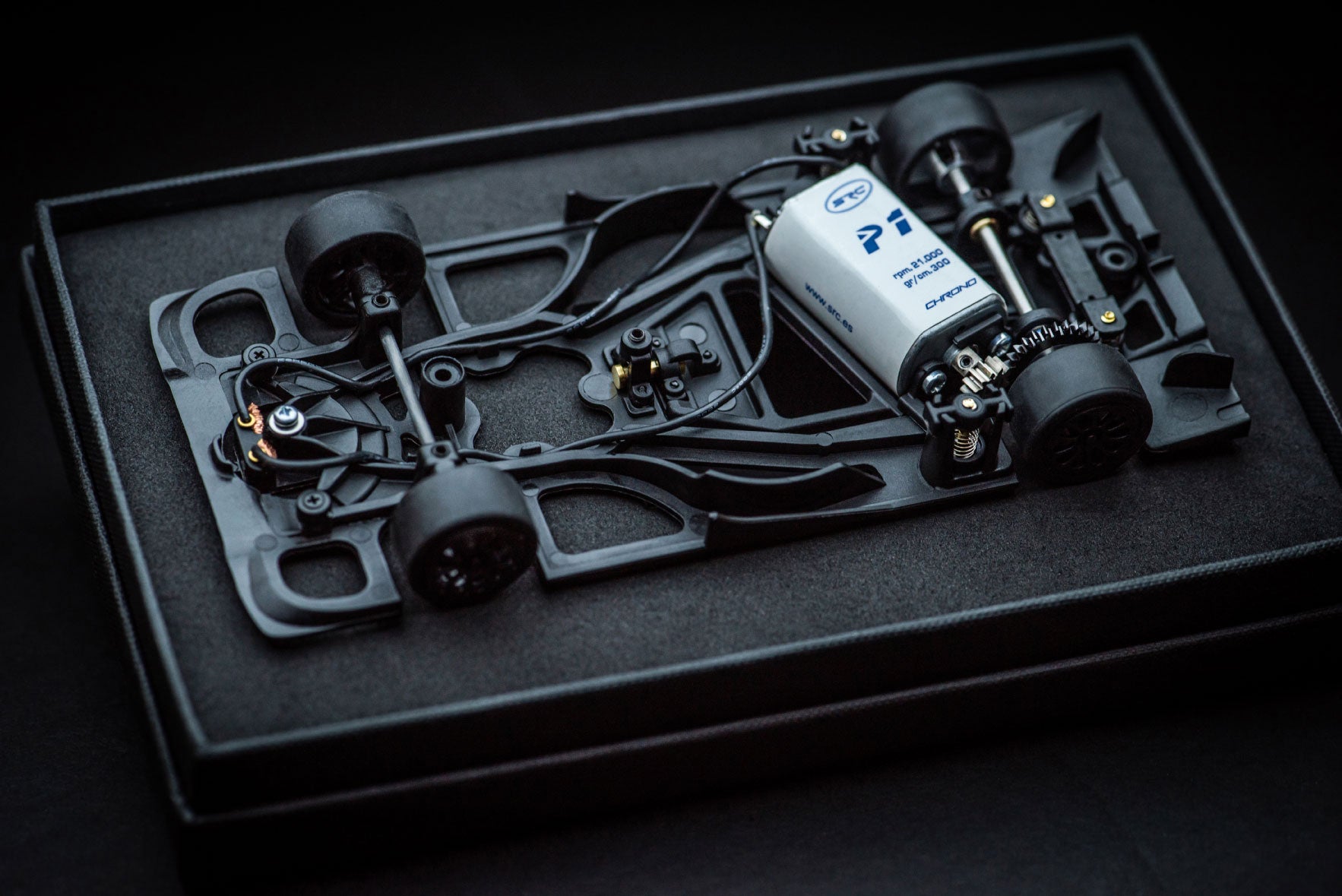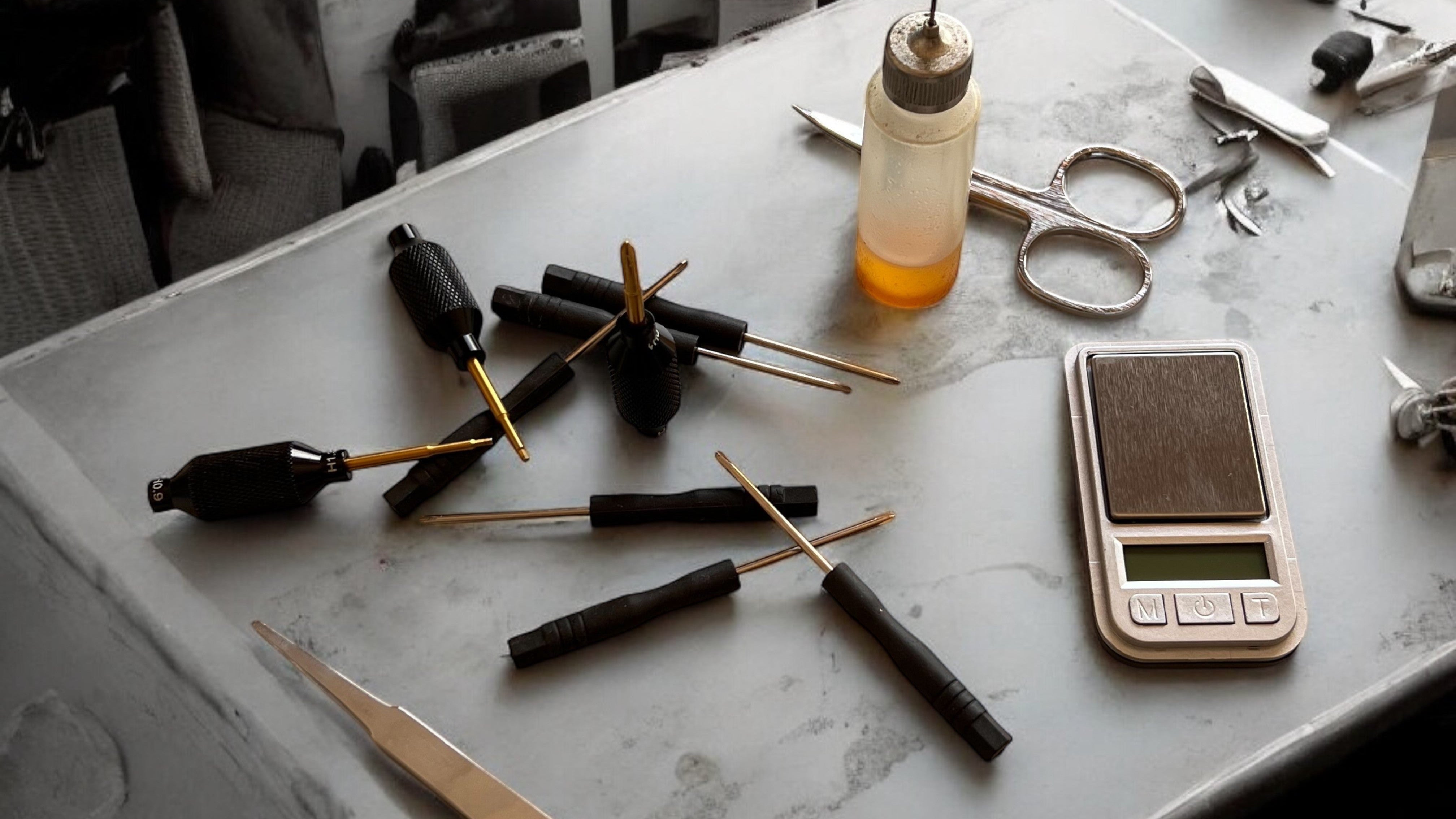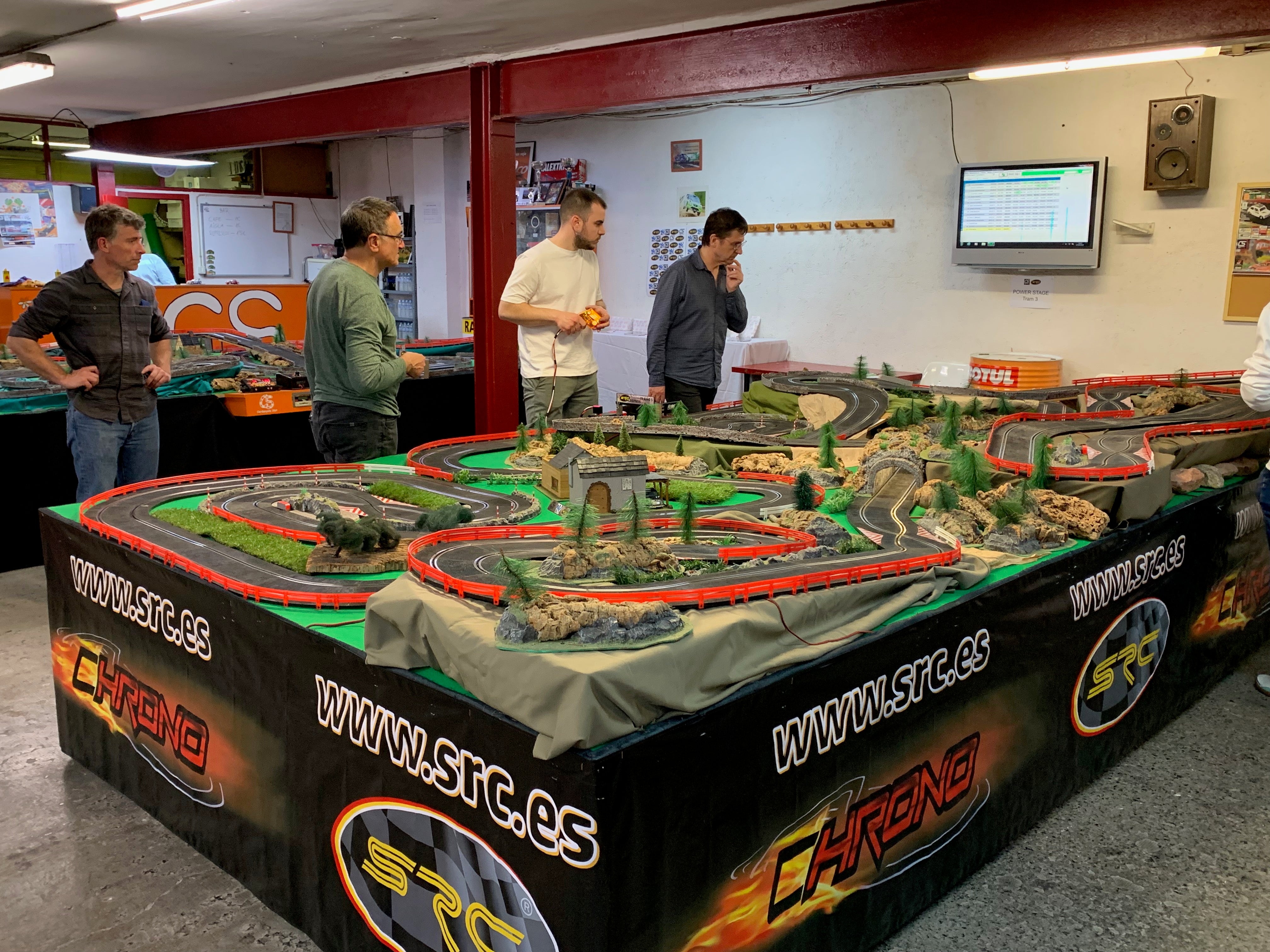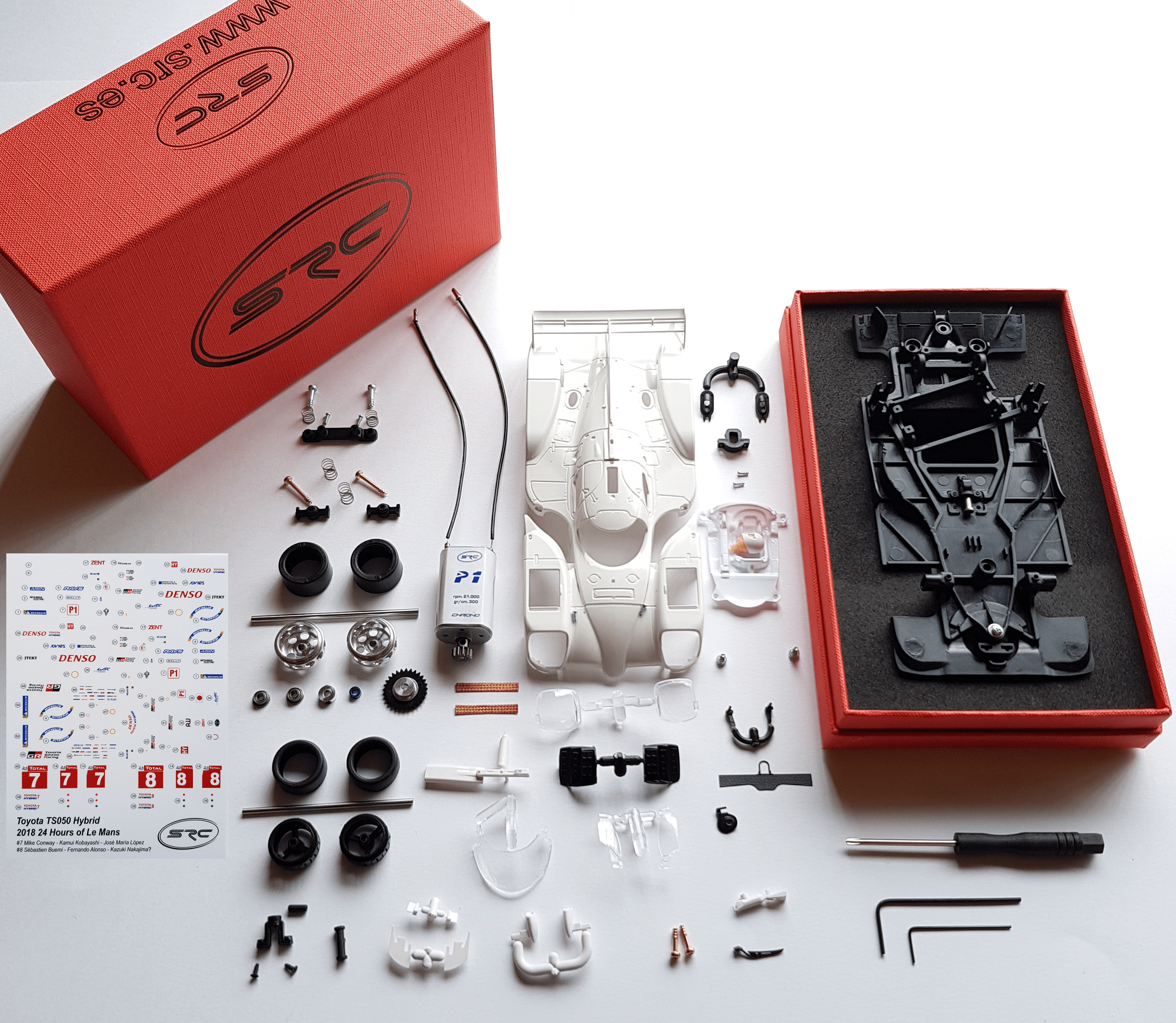
ASSEMBLY with MASTERSLOT regulations of the KIT 50001 TOYOTA LMP1 SRC
GUIDE:
It is very important to take into account the manufacturer of the track. If the track is NINCO, the guide that comes with the KIT 50001 is too thick and it will go stumbling. A quick and effective solution is to use the T1 guide (RM0704 or RM0709 designed and intended for NINCO track) together with the T3 guide spring (RM0813), making it unnecessary to place any washer at the base of the guide stem. If, on the other hand, the track is NO NINCO or if you wish to use the guide that comes in the KIT, a 0.5mm washer will suffice. In the case of NINCO track use, this RM0713 guide could be perfectly used by filing the keel or blade.
FRONT AXLE:
Rims and tyres included in the Chrono 50001 KIT. The KIT axle, although not strictly necessary, is replaced by the carbon axle (RM0216). The lightness of the front axle and the better fit of the carbon axle in the 2mm hubs of the rims, avoids that these go with a point of fixative or glue. The hollow front axle, if not correctly inserted by turning, acts as a reamer due to its thinness in the diameter.
*With regard to the height adjustment, as high as possible without compromising the correct movement of the axle.

BOLT SYSTEM ADJUSTMENT:
At this point on the motormount, the "bolt" (bolt or pendulum) should have some vertical "freedom" movement (about 0.5mm). NOTE: Approximately, the 2.5x6mm stud is almost flush with the top of the bracket, using the metal T1 bolt (see photo).

LATERAL SUSPENSION:
The adjustment of this part of the suspension with the springs of the KIT, is specific to the riding style of each rider or the characteristics of each circuit. However, a good starting point would be to tighten the bolts completely until the lateral supports rest on the chassis, but without forcing them. After that, you can loosen them until you find the optimum setting. It must be taken into consideration that the screws that come in the KIT have a considerable thread pitch, so it is advisable to "adjust by quarter turns" of the suspension bracket screw itself.

REAR SUSPENSION:
As with the side suspension, the setting of the rear suspension is also conditioned by the rider and the track, but the setting mentioned below is very likely to be the optimum setting "almost" for any situation.
The adjustment of this part of the suspension could not be simpler. It consists of fitting the springs from KIT 50001 and the bridge. Then we have to tighten the bolts until the bridge starts to compress the springs. In a nutshell, it could be like letting the suspension bridge drop onto the springs, but with hardly any pressure on the springs.
*The 1.4x4mm screws in the centre of the rear suspension bridge are to fix the rear suspension bridge to the chassis. In this way the locking effect of the bridge is achieved on wooden surface tracks.

NOTE:
Unless the reference has been specified, all the components used are included in KIT 50001. The only components that I have not used for the reasons that I explicitly state, have been:
1.- The cables: a strictly personal component in most of the pilots.
2.- The rear rims: SRC does not have the 16,9mm in 10mm width that we usually have as a reference in competition for the plastic tracks in which we ride or compete.
3.- The engine: The engine used is the FLAT of SLOT.IT by regulation. Personally and agreeing with many drivers, the P1-SRC is better in characteristics and behaviour, but it is not homologated for use in the established competitions where there are more LMP1 or LMP2 because not all the prototypes are designed as SRC has executed it, where the two types of long box engine are used.

SRC REFERENCES USED:
- 50001
- RM1612
- RM0704/RM0709
- RM0813
Important note:
The material of the KIT 50001 is the one used by me and my partner Abel García Navarro, during the 8h of Valladolid last January 2022. Everything is included in the KIT, or the spare parts mentioned in the notes. We would like to point out, without underestimating anything in the KIT, that if we have changed any spare part it was because SRC had brought it out as a novelty and also to see if we could "scratch" a few tenths of a second on the stopwatch. At the end of the race, those tenths that we were able to achieve with the updates were added to the rest of the 50001 KIT so that we achieved our first victory for the brand.
The development work of SRC, is reflected in each part that is made to improve, either by tests of all the teams or by the studied evolutions that leave the experiences in the different circuits and types of tracks. As for our sensation or sensations regarding the driving, we wrote that it has been a very comfortable and fast driving with the TOYOTA for our first race with the LMP1. Our goal was to evolve based on the KIT 50001 with the material that our brand SRC would be putting as a novelty in the competition sector.
The personal valuations and agreed at the same time with our brand are, that the youth of this project, the dedication and the effort of all together with the confidence that is needed of the fans, pilots and public in general is what can make that soon we can have a new battle partner in the LMP1 category; designed and executed by SRC to continue enjoying our hobby in any track or circuit.
Author: José Manuel Valero SRC





